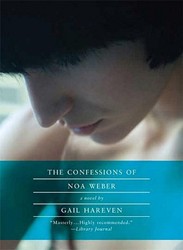In December 1959, an awkward but sweet graduate student who is depressed by his ex-girlfriend’s immediate marriage to another man, stalled in his studies, and without money, Shmuel Ash decides to leave Jerusalem and academic life. A stocky figure wreathed in masses of curly hair, Shmuel hurtles through the streets of the city without any direction or notion of where he is going or what he will do next when he sees a notice seeking a companion for an aging invalid.
Shmuel answers the ad and enters the lives of its two residents, Gershom Wald, an argumentative and loquacious retired teacher, and Atalia Abravanel, his secretive and alluring daughter-in-law, in the dark house at the end of a lane on Jerusalem’s outskirts. Through chance meetings with Atalia and long evenings with Wald, Shmuel learns what has brought them together to live out their lives in a sterile routine.
Inevitably Shmuel falls in love with Atalia, a love he knows will not be answered. But the love story is only one strand of this richly textured novel. In their nightly conversations Shmuel and Wald replay the history of Israel and its formation, informed by the arguments of Atalia’s dead father, labeled a traitor for his opposition to the Jewish state and his vision of a Jewish-Arab state. Underlying that story is the story of Judas Iscariot, also labeled a traitor, the subject of Shmuel’s sympathies and studies.
Amos Oz, whose dedication to the two-state solution has at times called his loyalty into question, asks whether these men might be betrayed true believers, men whose hearts were broken by bold dreams that failed to come true.
Although Judas is set decades ago, its arguments are still relevant, and Oz’s characters give them life, making Judas far richer than a novel of ideas. The characters bear the scars of Israel’s history, and Oz moves readers to both sympathy and understanding. Oz is also a master of descriptive writing: his depictions of Jerusalem bring the reader out into the city’s streets, feeling the chill of the rain and worrying about slipping on the uneven stones. His story of the crucifixion, told by Judas, is a visceral, unforgettable retelling.
Oz, one of Israel’s most prominent and celebrated writers, writes with grace and power. Whether read as a love story, a coming-of-age novel, or simply an array of thought-provoking ideas, Judas will hold readers’ attention throughout and linger in their minds long after the book is closed.
Related Content:
Maron L. Waxman, retired editorial director, special projects, at the American Museum of Natural History, was also an editorial director at HarperCollins and Book-of-the-Month Club.



